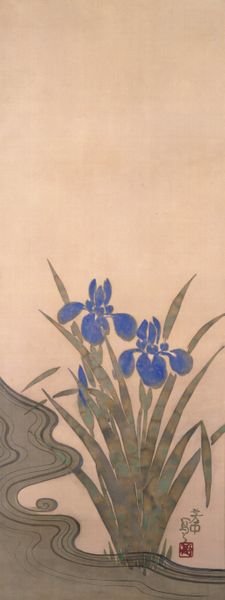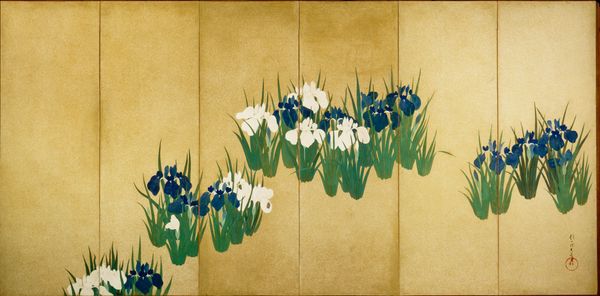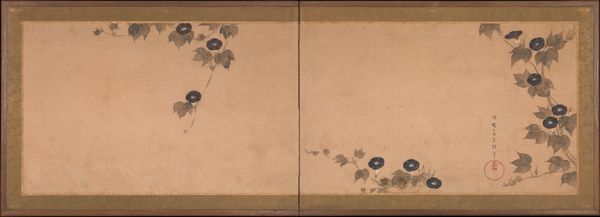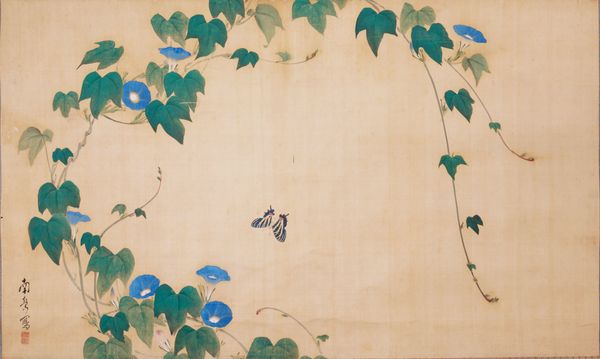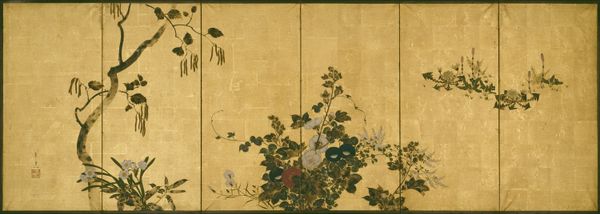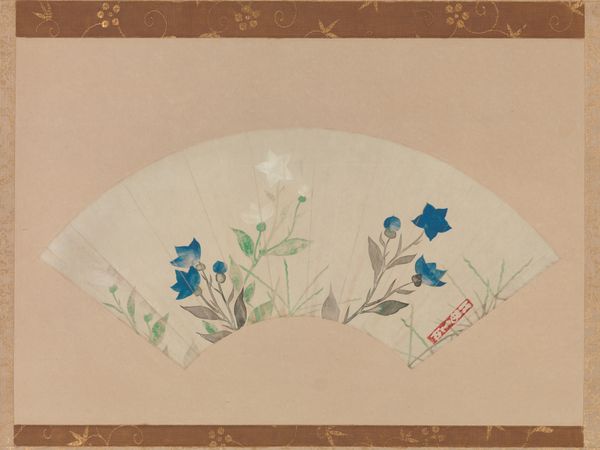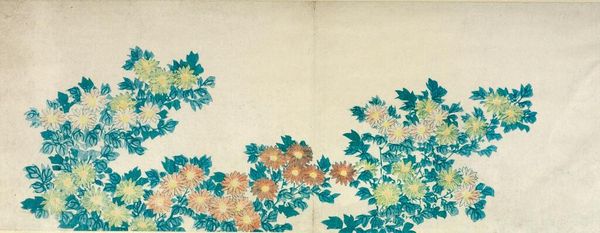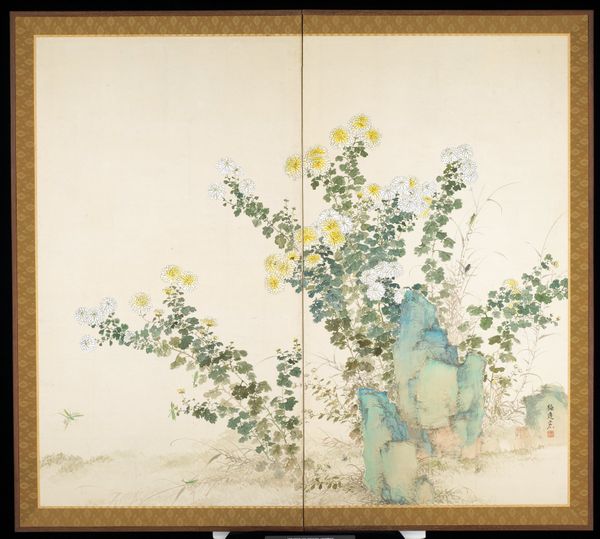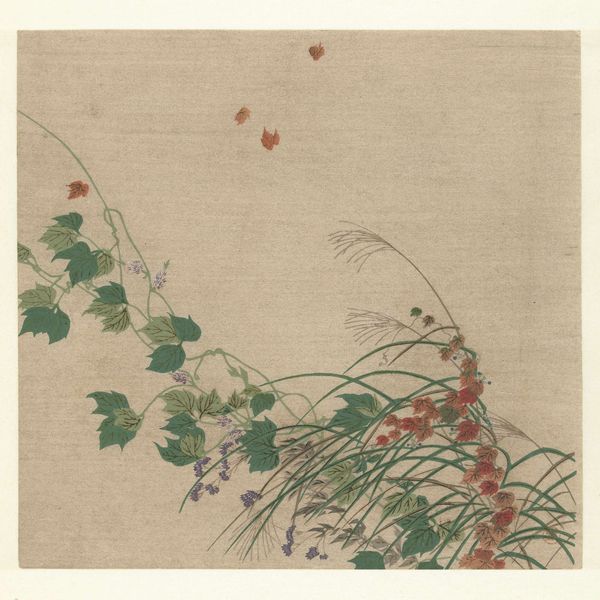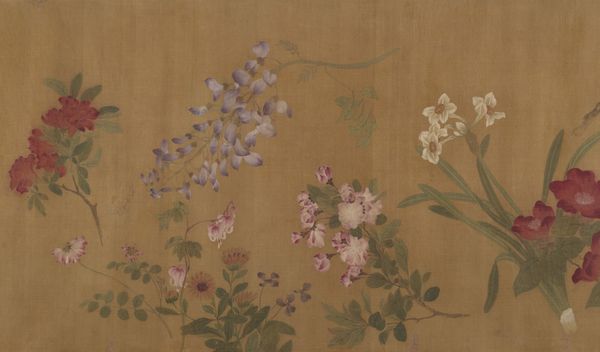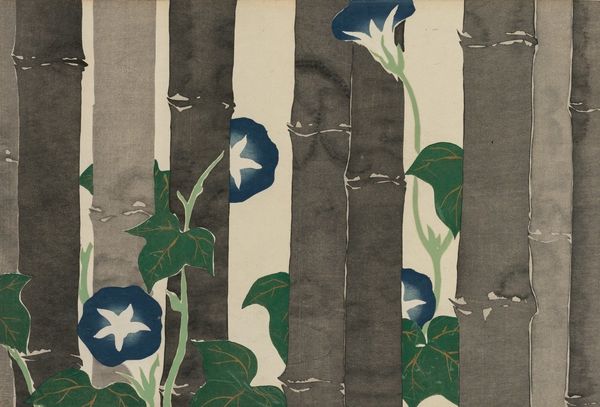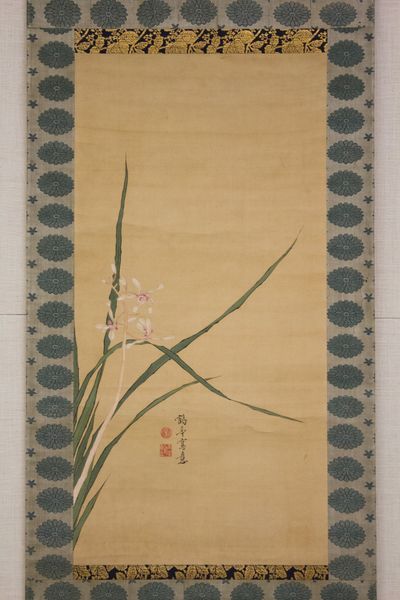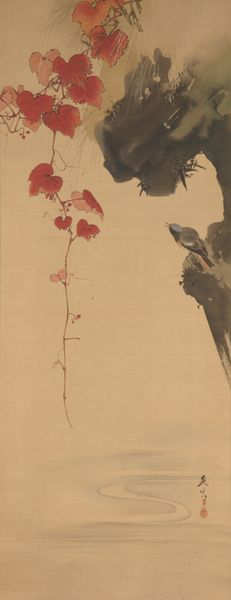![Irises [right of a pair] by Sakai Hōitsu](/_next/image?url=https%3A%2F%2Fd2w8kbdekdi1gv.cloudfront.net%2FeyJidWNrZXQiOiAiYXJ0ZXJhLWltYWdlcy1idWNrZXQiLCAia2V5IjogImFydHdvcmtzLzY2YTIxODMwLWZmYzctNDViMy05NTAxLWM3YzlmMTQ0YTAyYy82NmEyMTgzMC1mZmM3LTQ1YjMtOTUwMS1jN2M5ZjE0NGEwMmNfZnVsbC5qcGciLCAiZWRpdHMiOiB7InJlc2l6ZSI6IHsid2lkdGgiOiAxOTIwLCAiaGVpZ2h0IjogMTkyMCwgImZpdCI6ICJpbnNpZGUifX19&w=3840&q=75)
Dimensions: 47 5/8 × 96 in. (120.97 × 243.84 cm) (image)48 7/8 × 97 1/4 × 1/2 in. (124.14 × 247.02 × 1.27 cm) (mount)
Copyright: Public Domain
Sakai Hōitsu rendered these irises on gold leaf with ink and color. The iris, or kakitsubata, is more than just a pretty bloom; it carries deep cultural resonance in Japan, often linked to the festival of Tango no Sekku, now Children's Day, a celebration of strength and vitality. The arrangement here is deliberately sparse. The placement of irises in clusters against the shimmering gold evokes a sense of contemplative space, inviting viewers to meditate on nature's beauty and its transient existence. The iris motif is ancient, cropping up in Egyptian art, where it symbolized eloquence. In Christian iconography, the iris also represents the Virgin Mary, its sword-like leaves alluding to her sorrow. Note how Hōitsu simplifies the flower's form, reducing it to essential shapes and colors. This echoes the principles of Zen Buddhism, emphasizing simplicity and direct experience. These irises, thus, connect us to a broader human yearning for meaning, bridging ancient beliefs with personal introspection, speaking to a collective memory of nature and the human spirit.
Comments
No comments
Be the first to comment and join the conversation on the ultimate creative platform.
